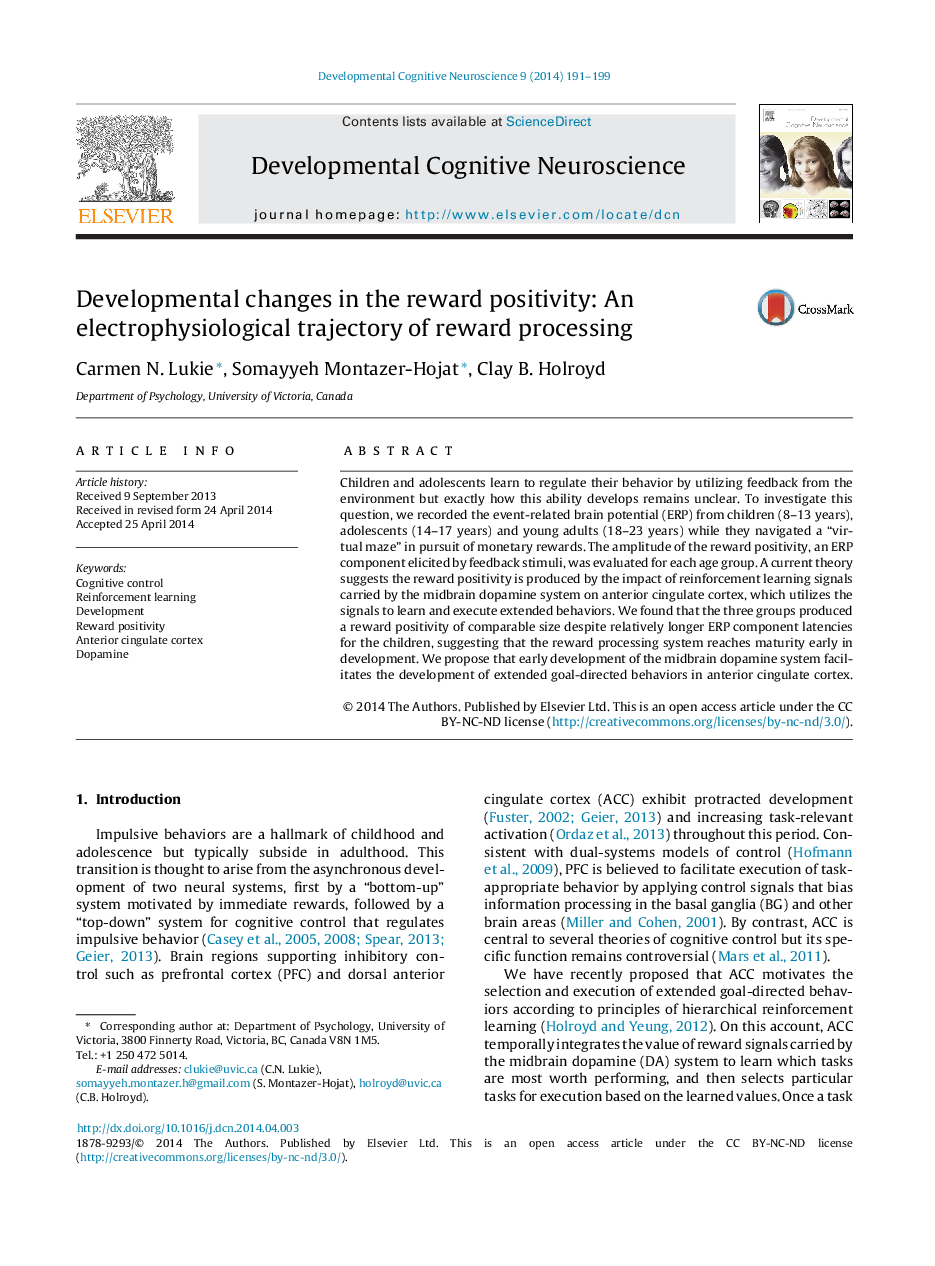| کد مقاله | کد نشریه | سال انتشار | مقاله انگلیسی | نسخه تمام متن |
|---|---|---|---|---|
| 4316639 | 1613114 | 2014 | 9 صفحه PDF | دانلود رایگان |
• We use a ‘virtual maze’ to elicit the reward positivity in 8–23 year olds.
• Reward positivity amplitude is comparable across children, adolescents and adults.
• Children have longer latencies for P200, N200 and P300 ERP components.
• We propose that dopamine reinforcement signals develop early to guide behavior.
Children and adolescents learn to regulate their behavior by utilizing feedback from the environment but exactly how this ability develops remains unclear. To investigate this question, we recorded the event-related brain potential (ERP) from children (8–13 years), adolescents (14–17 years) and young adults (18–23 years) while they navigated a “virtual maze” in pursuit of monetary rewards. The amplitude of the reward positivity, an ERP component elicited by feedback stimuli, was evaluated for each age group. A current theory suggests the reward positivity is produced by the impact of reinforcement learning signals carried by the midbrain dopamine system on anterior cingulate cortex, which utilizes the signals to learn and execute extended behaviors. We found that the three groups produced a reward positivity of comparable size despite relatively longer ERP component latencies for the children, suggesting that the reward processing system reaches maturity early in development. We propose that early development of the midbrain dopamine system facilitates the development of extended goal-directed behaviors in anterior cingulate cortex.
Journal: Developmental Cognitive Neuroscience - Volume 9, July 2014, Pages 191–199
